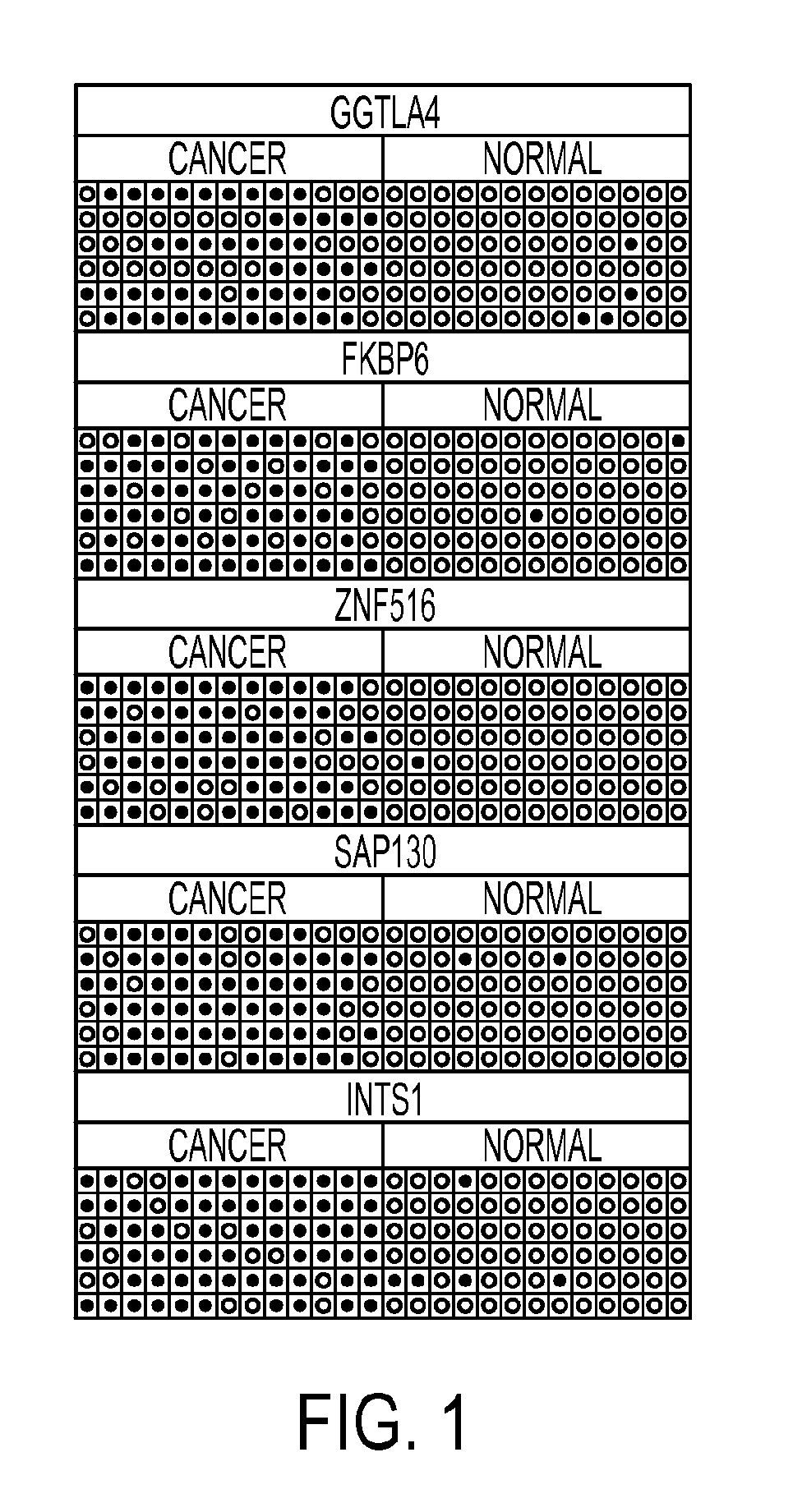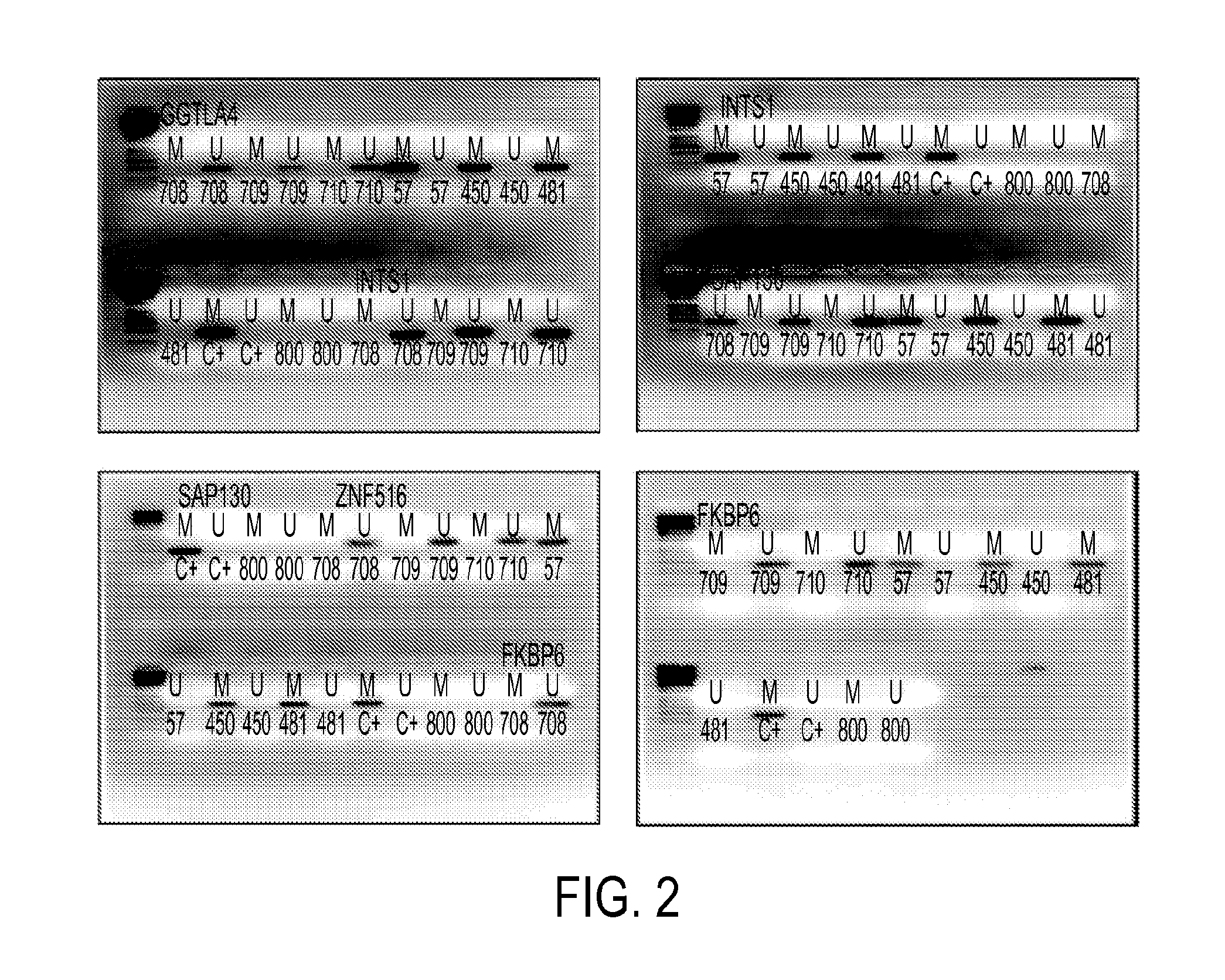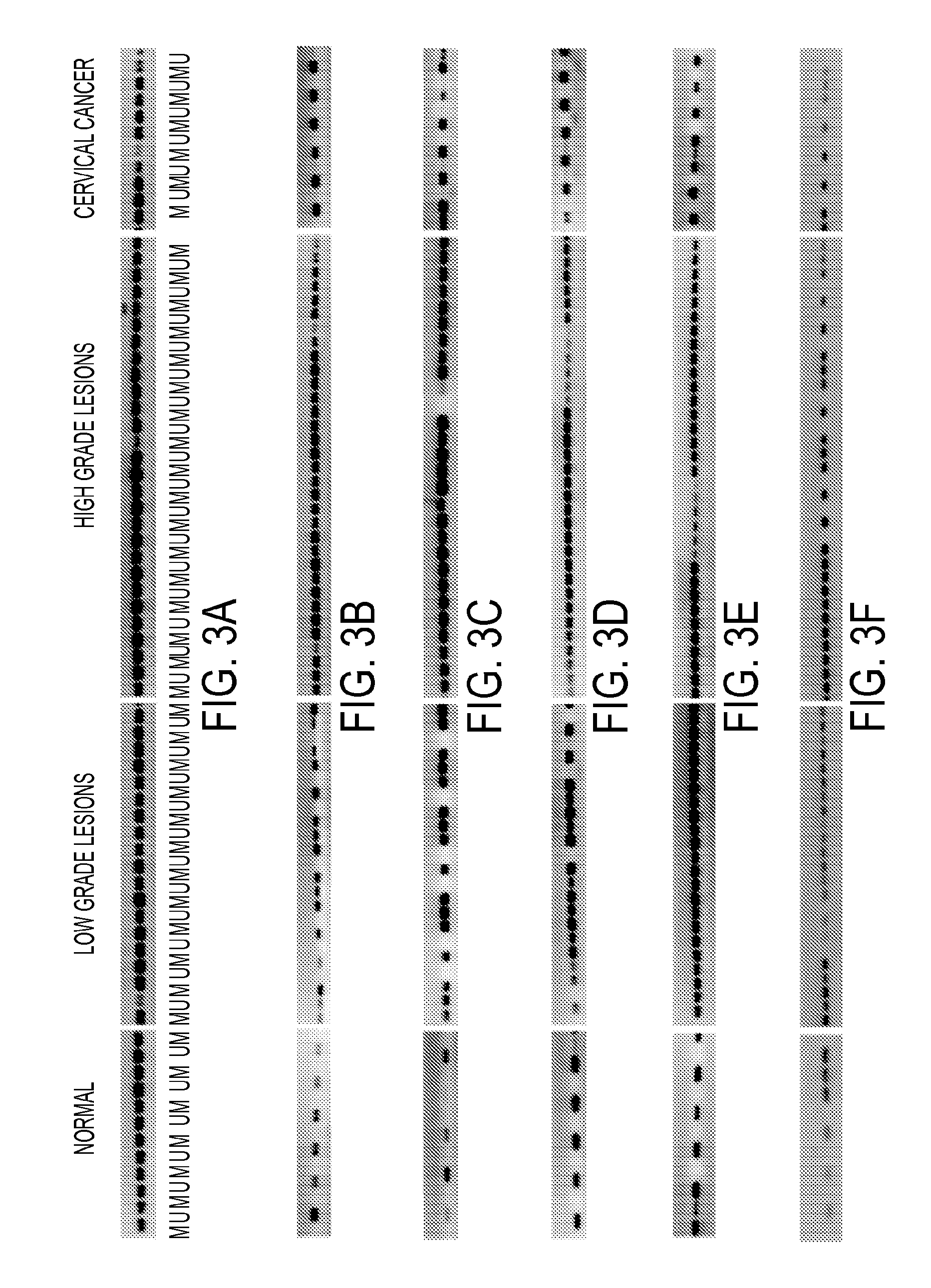Hypermethylation Biomarkers for Detection of Cervical Cancer
a biomarker and hypermethylation technology, applied in the field of cervical cancer, can solve the problems of low single-test sensitivity, poor reproducibility of equivocal and minor abnormalities, and limited application prospects
- Summary
- Abstract
- Description
- Claims
- Application Information
AI Technical Summary
Benefits of technology
Problems solved by technology
Method used
Image
Examples
example 1
Methods
Materials and Methods
[0059]Clinical samples: The samples were collected at Doctor Hernán Henríquez Aravena (HHHA) tertiary care regional hospital in Temuco, Chile, between 2004-2008. The diagnosis was confirmed by histological examination (biopsy) during which a team of three pathologists from HHHA read the results and achieved a consensus diagnosis. A random set of pathology slides from the study samples was sent for diagnostic and immunohistochemistry confirmatory review by a pathologist at Johns Hopkins School of Medicine. The protocol for this study was approved by the Institutional Review Boards (IRB) of the Hernan Henriquez Aravena Hospital and the Johns Hopkins School of Medicine. To determinate the methylation status of promoter regions in the genome, 12 normal samples and 7 cervical cancers were used to perform the hybridization to an oligonucleotide tiling array (385K CpG Islands plus Promoter arrays, Nimblegen, Wis.). MSP validation was performed on 221 HPV genotyp...
example 2
Characteristics of the Patients
[0075]Two groups of patients were used in this study: One for the MSP validation (A) and other one for the IHQ analysis (B). Clinical and demographic variables were different in cases patients (LSIL, HSIL and CC) and controls. The age of the patients into three groups:50 years (A:22.6%, B:50.0%). Both groups of samples the lesion status was associated with age as expected. In the group A the most of low grade lesions (63.6%) were seen in patients 50 years old. In the group B normal patients were mostly seen (40.7%) among 31-50 year old patients, and 61.9% of invasive carcinoma patients were >50 years old. The ethnic descent of the patients was divided between native Chilean people (Mapuche) (A:22.2%, B: 28.7%) and Hispanic European (A:77.8%, B: 71.3%). The majority of the samples came from patients that were not Mapuches. The patients are all public assistance patients who receive different amounts of health care subsidy according to their income level...
example 3
[0076]PCR and Reverse line blot analyses revealed that 176 (79.6%) samples were HPV positive and 45 (20.4%) were HPV negative. Among normal samples 12% were HPV positive, most for single infection of HPV 16. Among LSIL 82% were HPV positive, most with single infections with HPV16 (41%) or HPV 11 (9%). Among the HPV positive LSIL lesions, 14% were multiple infections, most with HPV 16 and 18. Among the HSIL 95% were HPV positive, most of which (78%) were single infections with HPV 16 (50%) and HPV 18 (13%). Among tumor samples 99% were HPV positive, most of which (85%) were single infections with HPV16 (63%) and HPV 18 (10%).
[0077]Most of the patients (79.6%) were HPV positive. The largest number of HPV positive patients were in the 30-50 years old age category (51.7%), followed by >50 yrs old (24.4%) and <30 yrs old (23.9%). Most of the HPV positive patients were Non-Mapuches (80.1%) and revealed a socio-economic gradient similar to the study population: A Indigent (5...
PUM
| Property | Measurement | Unit |
|---|---|---|
| area | aaaaa | aaaaa |
| methylation density | aaaaa | aaaaa |
| heterogeneity | aaaaa | aaaaa |
Abstract
Description
Claims
Application Information
 Login to View More
Login to View More - R&D
- Intellectual Property
- Life Sciences
- Materials
- Tech Scout
- Unparalleled Data Quality
- Higher Quality Content
- 60% Fewer Hallucinations
Browse by: Latest US Patents, China's latest patents, Technical Efficacy Thesaurus, Application Domain, Technology Topic, Popular Technical Reports.
© 2025 PatSnap. All rights reserved.Legal|Privacy policy|Modern Slavery Act Transparency Statement|Sitemap|About US| Contact US: help@patsnap.com



